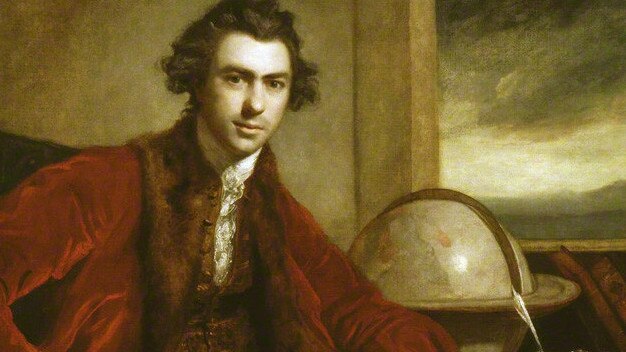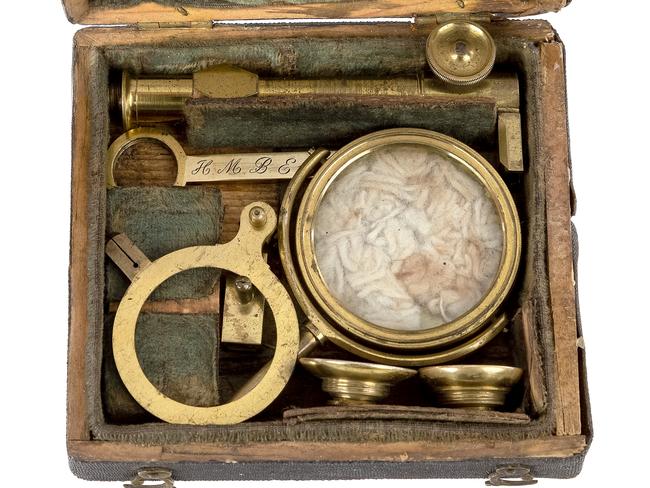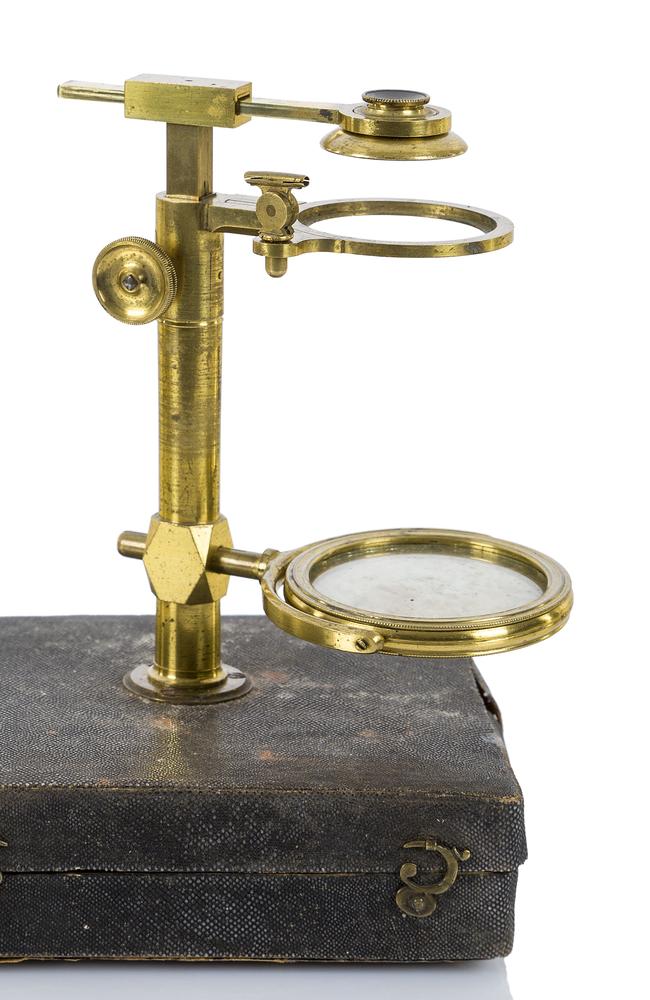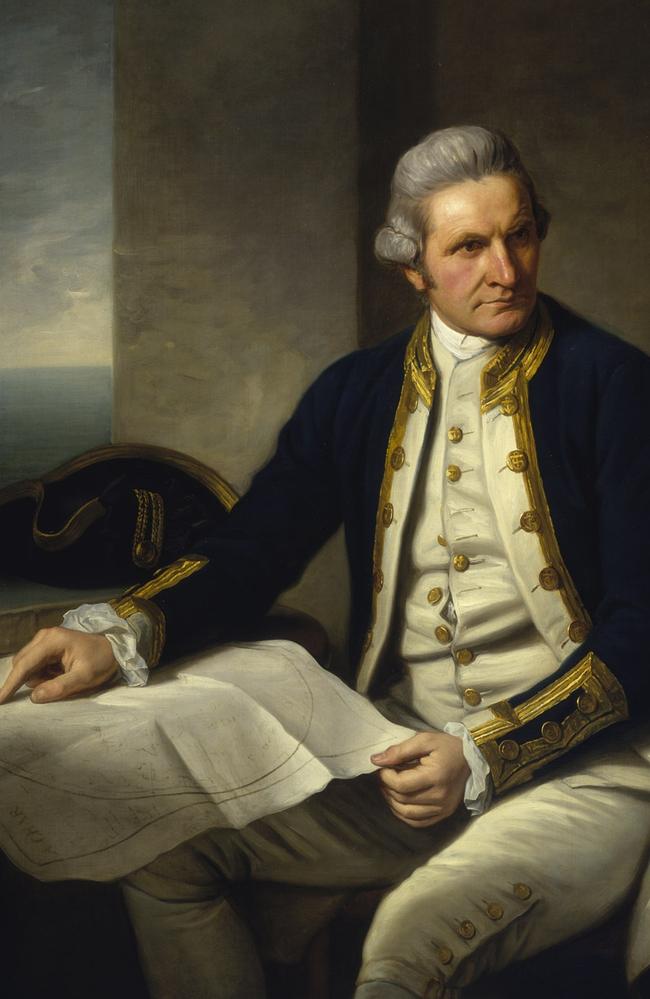‘Exceptionally rare’ microscope from Captain Cook Australian voyage found, to be auctioned off
An “exceptionally rare” microscope designed for Captain Cook’s maiden voyage to Australia is up for grabs. See how you could score a piece of history.
World
Don't miss out on the headlines from World. Followed categories will be added to My News.
Exclusive: A microscope purpose built for Captain Cook’s maiden voyage of discovery in the 18th century is poised to go under the hammer.
The instrument proved crucial in the explorer’s documentation of Australia’s natural history, after his ship, the Endeavour, smashed into the Great Barrier Reef, near Cairns, Queensland.
He cursed the land down under at the time for grounding him for six weeks while the vessel was repaired.
But the disruption to his voyage of discovery was to become a fortuitous chance for his team to document the landscape with naturalist Joseph Banks discovering some original botanical specimens along the 2300 km reef. They examined wet specimens of flora and fauna, some of which are now preserved in the Australian National Herbarium.

The “exceptionally rare” Ellis type microscope – which cost £2, a considerable sum for the time given a junior house maid earned £3 a year – was made in 1768 for the first Pacific voyage.
It will be auctioned in London on November 1, after being discovered in a dusty biscuit tin in an attic.

Specialist auction house Charles Miller Ltd expects it to fetch between $59,000 and $98,000.
“When Banks was offered a chance to accompany Cooke he sat about acquiring the finest naturalists’ instruments and accessories he could,” said Charles Miller.

“Although no list of his equipment has been found, the most important instruments were the optical items, including a three foot achromatic telescope for the study of passing coastlines and inaccessible places, four Ellis aquatic microscopes including this one and a compound microscope,” Charles Miller said.
“The aquatic microscopes in its fish skin cases were used to observe marine biology and as early forms of the dissecting microscope for entomology and botany.
“Artefacts from the first voyage of discovery are extremely rare indeed, it was lost after Banks died in 1820 and it was only privately realised in 1950 unlocking an extraordinary history for a modern audience in 2022.”

James Cook’s first voyage aboard the Endeavour began on May 27, 1768. His three aims were to establish an observatory at Tahiti in order to record the transit of Venus (when the planet passed between the earth and the sun), to record natural history and continue the search for the Great South Land.
Cook reached the southern coast of New South Wales in 1770 and sailed north, charting Australia’s eastern coastline and claiming the land for Great Britain on August 22, 1770.
The Endeavour spent 18 dangerous and windy days and nights continuing north to the Great Barrier Reef.
The microscope was believed to be among items sold in the late 19 Century. It was purchased by prominent antiquarian V.B. Crowther-Beynon, whose wife sold after he died. In 1950 it was bought by the present vendor’s father who stored it away and his attic.
Originally published as ‘Exceptionally rare’ microscope from Captain Cook Australian voyage found, to be auctioned off




